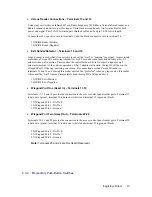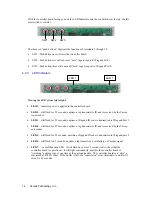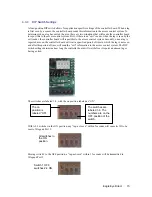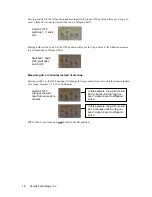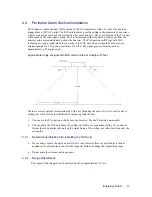
6
Eagle Eye Direct
2.4 Eagle Eye Direct Controller Board
The Eagle Eye Direct controller board allows you to connect Versus Infrared (IR) and/or Radio
Frequency (RF) readers directly to any existing access control panel that accepts 2601 Wiegand bit
structure format. This functionality allows any person or item entering a room or area to generate an
“In” or “Admitted” event in the existing access control system. This is the same as a person
presenting their proximity access card to a reader to gain access to the room. But, unlike the typical
access control system that generates no information when you pull your proximity card away from the
reader, the Eagle Eye Direct controller board also watches to see when a person or asset leaves the
detection field and generates an “Admin Out” or “Egress” event in the access control system.
The controller board serves two basic functions:
1. To convert VIS tag IDs to a Wiegand format.
2. To serve as a buffer for continuous transmissions from the tags and only pass data when:
a. The tag is first seen.
b. When the tag is no longer seen
c. Upon request
The “buffer” function is necessary so that all tagged assets or people are not sending a constant stream
of data to the access control system. There is a difference between a Versus Technology active tag and
a typical non-powered access card. The “passive” tag or card receives its power from the reader and
only sends data when excited by the reader. The Versus Technology “active” tag sends data at
constant intervals, from every .5 seconds to every 3 minutes. One hundred “active” tags in a room
could then be sending 100 “Admitted” events every second. The Eagle Eye Direct controller board
sends data only on the first “admitted” and buffers additional transmissions. Eagle Eye Direct is now
monitoring to see when a tag does not “report in” and at that moment, sends a 2601 Wiegand ID code
to the access control panel to say a tag has left the area.
All security protocol, annunciation such as bells, alarms, lights, camera call up, etc., is a function of
the existing access control system. If your system can create a “guard alert” when someone presents
their card to a door they are not authorized to access, your system can also generate that same alert
when a tagged asset is removed from a room without proper authority.

















